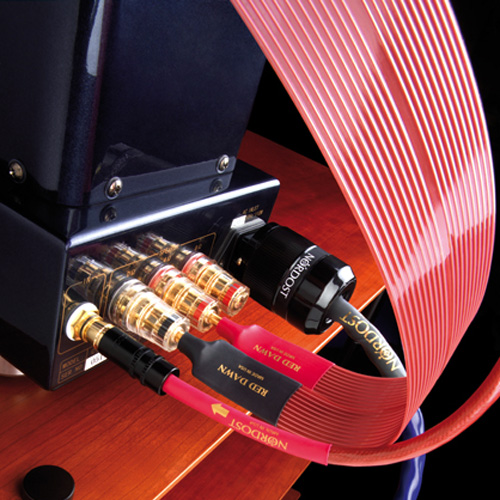Cable Dressing
 hen it comes to cables,
tidiness is next to Godliness. Taking time over your cable dressing can make a surprising
difference to system performance. hen it comes to cables,
tidiness is next to Godliness. Taking time over your cable dressing can make a surprising
difference to system performance.
If you follow these basic rules you can’t go far
wrong.
- Keep power and signal leads as far apart as possible. The
simplest way of achieving this is to have AC entering the rack/system from one side, while
the signal cables are arranged and the speaker cables exit on the other. Where signal and
power leads must cross, try to space them and have them cross at right angles.
- Don’t be tempted to run interconnect cables through
rack uprights, strap them in place, coil them, wrap them around each other or tidy them up
in other ways. Aim for clean, simple signal paths physically and electrically.
- When using lightweight connectors with minimal contacts --
such as Bullet Plugs or WBT NextGens -- make sure that the ground contact is positioned on
the inside of the cable’s natural curve. This will ensure good contact and
continuity, even if you move the equipment slightly. Accidentally lifting a signal ground
can have dramatic (and tragic) results!
- Never, ever coil excess speaker cable. Do so and
you’ll create a large, inefficient air-cored inductor that will tailor your
speaker’s bass response. It looks tidy, but don’t do it.
- Wherever possible keep your interconnects away from walls.
In the cramped confines behind a rack this is not always possible, but pulling the rack
forward a few inches can often make a real difference in this regard and you will hear the
musical benefits (less grain, more color, an easier sense of flow). In the context of a
high-resolution system, jamming the cables down the back of the rack to save a little
space is a bit like putting carpet in a Formula 1 car to keep the noise down: pointless as
well as detrimental to performance.
- Make sure you use a contact cleaner on a regular basis. We
like Caig DeoxIT but there are plenty of options out there, and your dealer can advise.
How often should you go through the whole system? That depends on the environment and
humidity. If you live in Arizona or New Mexico, then once every six months should be
sufficient. If you live in the tropics, then monthly will be nearer the mark. Again,
well-informed local advice is invaluable.
|